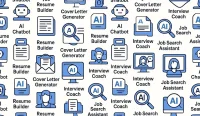What is Systems Thinking in Technology?
Systems thinking refers to the ability to understand how different parts of a system interact. Originating from systems theory in biology and engineering, this approach now applies to everything from traffic optimization to global finance.
At its core, systems thinking asks three fundamental questions:
- What’s connected?
- What causes what?
- Where are the feedback loops?
Instead of solving problems in isolation, systems thinkers ask, “What happens next if I fix this?” This perspective shift is crucial in today’s interconnected digital world.
Real-World Examples of Systems Thinking
Consider Facebook’s 2020 algorithm change, which aimed to boost meaningful interactions. The unintended consequence? Increased political polarization. This represents a classic system-level failure—optimizing one node without modeling the entire network.
Think of it like a rainforest ecosystem. You can’t just study individual trees; you must examine weather patterns, soil composition, insect populations, and animal behaviors. Cutting down one section doesn’t merely reduce tree count—it alters water cycles, temperature patterns, and migration routes. Systems thinking provides that zoomed-out perspective, asking not just “How do I grow one tree faster?” but “What happens to the entire forest if I do?”
In software development, this translates to understanding how a clever caching solution might interact with databases, load balancers, and downstream analytics. Without this perspective, developers might accidentally create data staleness, misreporting, or performance bottlenecks.
Why Systems Thinking Matters More Than Ever in 2025
AI is a System, Not Just a Model
Deploying AI isn’t merely about fine-tuning algorithms. It requires understanding the entire lifecycle—data sources, feedback loops that impact bias, and behavioral incentives. Recommendation algorithms, for instance, can unintentionally promote extreme content by optimizing solely for watch time, creating harmful feedback loops.
Cybersecurity is Now Systematic
The SolarWinds hack exposed vulnerabilities in third-party tools that infected thousands of organizations, including US federal agencies. This breach wasn’t about weak passwords—it was about supply chain vulnerabilities. Modern cybersecurity requires understanding how systems interconnect and where single points of failure can cascade into widespread compromise.
Climate Tech Demands Interconnected Solutions
Decarbonization isn’t about building better batteries in isolation. It requires coordinated development of energy grids, storage systems, logistics networks, and manufacturing processes. Most climate tech failures occur not because of bad technology, but because systems weren’t properly aligned.
Don’t Just Optimize—Systematize
From AI feedback loops to cyber risk and climate infrastructure—2025 demands leaders who think in systems, not silos. Is your strategy aligned?
Post a Smarter Job Now →The Business Case for Systems Thinking
From a career perspective, this skill makes you exceptionally employable. Studies consistently rank systems analysis and design among the most valuable tech skills for the next decade. Every modern product is cross-functional, requiring understanding of how components interact across disciplines.
Consider a backend engineer at a fintech startup who optimizes database queries. While this might improve transaction latency, it could also create unintended opportunities for users to exploit timing advantages. Systems thinking enables you to anticipate these consequences before they become problems.
Hiring managers increasingly value candidates who can see around corners and understand the broader implications of their work. In today’s complex tech environment, siloed thinking is no longer sufficient.
How to Develop Systems Thinking Skills
Step 1: Learn to Diagram
Start with causal loop diagrams, stock and flow models, and architecture maps. These tools help visualize how components interact and identify potential bottlenecks or unintended consequences.
Step 2: Study Systems in Action
Reverse engineer how major platforms operate. How does Uber balance supply and demand in real time? How does Netflix decide which thumbnails to display and why? Understanding these systems provides valuable insights into complex interactions.
Step 3: Build Mental Models
Adopt thinking frameworks such as second-order consequences, feedback loops, and the distinction between bottlenecks and constraints. These mental models help you anticipate how changes might propagate through systems.
For structured learning, consider programs focused on systems thinking for impact or system dynamics. These courses provide formal frameworks for understanding complex interactions.
The Human Impact of Systems Thinking
Systems thinking extends beyond technology—it’s fundamentally a human skill. During the COVID-19 pandemic, policymakers with systems thinking backgrounds fared significantly better than those without. They understood how lockdowns would affect economic supply chains and education systems.
Urban planners use systems thinking to design more livable cities. Educators apply it to optimize entire school ecosystems rather than just individual lesson plans. Engineers use it to build products that work harmoniously in real-world environments.
The Future of Tech Careers
We’re entering an era where building isn’t enough, and staying in siloed roles is insufficient. Success requires building with awareness of the broader system you’re operating within. Whether you’re developing AI models, securing networks, or creating software solutions, understanding how your work fits into larger systems is crucial.
Systems thinking enables you to:
- Anticipate unintended consequences
- Identify opportunities others miss
- Design more robust solutions
- Communicate effectively across disciplines
- Lead complex projects successfully
Building Your Systems Thinking Toolkit
Practical Exercises
- Map Your Current Project: Create a diagram showing how your work connects to other systems
- Analyze Failure Points: Study recent tech failures and identify the systems thinking gaps
- Practice Scenario Planning: Consider multiple possible outcomes of your decisions
- Cross-Disciplinary Learning: Study fields outside your expertise to understand different system perspectives
Resources for Further Learning
- Books: “Thinking in Systems” by Donella Meadows
- Courses: MIT’s System Dynamics program
- Tools: Kumu for system mapping, Stella for modeling
- Communities: Systems Thinking World, LinkedIn groups focused on systems approaches
Don’t Just Optimize—Systematize
From AI feedback loops to cyber risk and climate infrastructure—2025 demands leaders who think in systems, not silos. Is your strategy aligned?
Post a Smarter Job Now →FAQ Section
What is systems thinking in technology?
This approach in technology is the ability to understand how different components of a system interact and how changes in one part can create cascading effects throughout the entire system.
Why is systems thinking important for tech careers?
This approach is crucial for tech careers in 2025 because modern technology is increasingly interconnected. AI systems, cybersecurity networks, and software applications all operate within complex ecosystems where changes in one component can affect the entire system.
How can I develop systems thinking skills?
You can develop systems thinking skills by learning to diagram systems using tools like causal loop diagrams, studying how existing platforms work, building mental models for complex interactions, and practicing scenario planning. Formal courses in systems thinking or system dynamics can also provide structured learning opportunities.
What are the career benefits of systems thinking?
Systems thinking provides significant career benefits including increased employability, better problem-solving abilities, improved communication across disciplines, and the ability to anticipate unintended consequences. Studies show that systems analysis and design skills are among the most valuable tech competencies for the next decade.
Conclusion
Understanding this skill isn’t just another addition to your resume—it’s a fundamental shift in how you approach problems and opportunities. In a world where everything is connected, the ability to understand and navigate these connections becomes your most powerful asset.
Whether you’re a developer, data scientist, product manager, or tech leader, developing systems thinking capabilities will set you apart in an increasingly complex and interconnected industry. Start building this skill today, and you’ll be prepared for the challenges and opportunities of tomorrow’s tech landscape.




